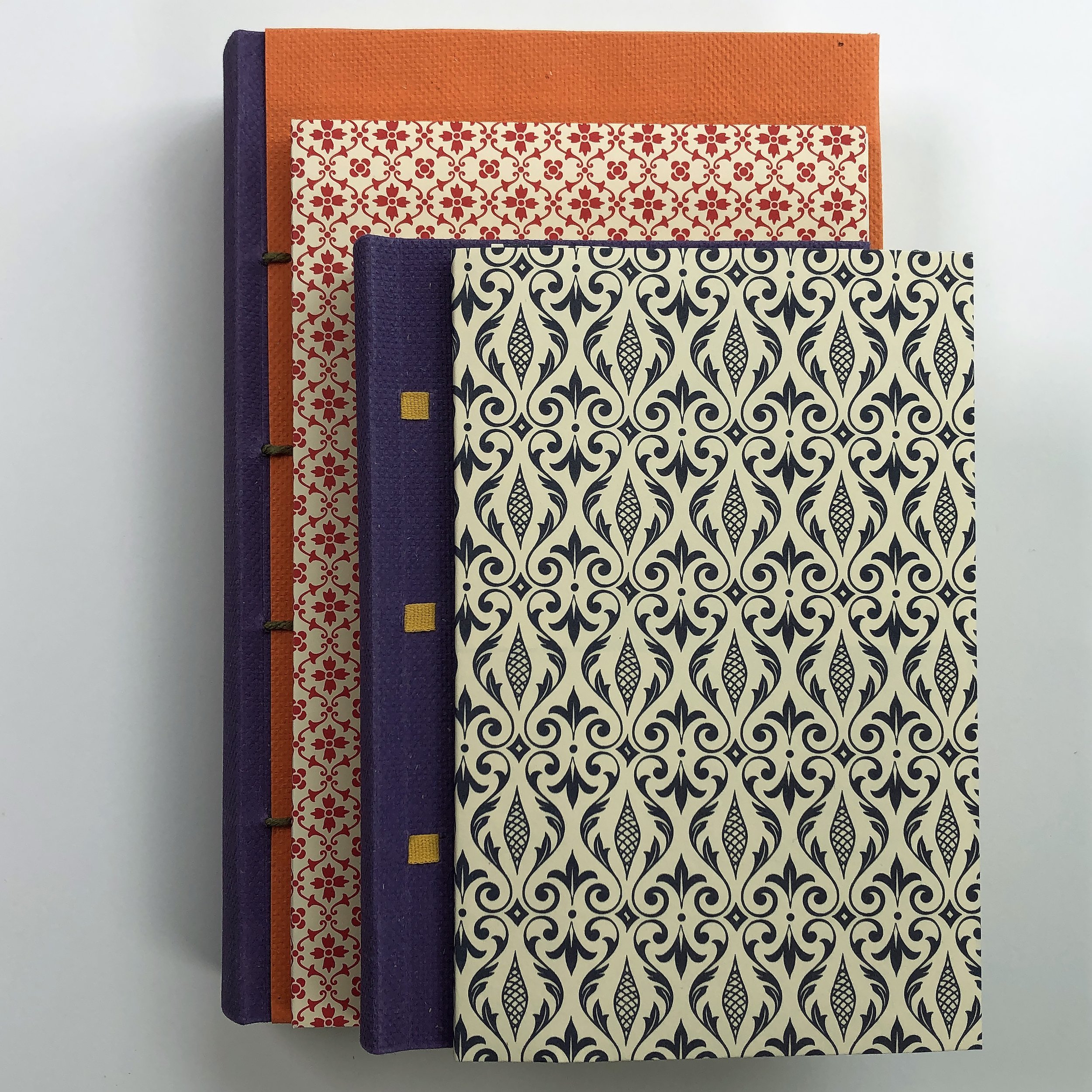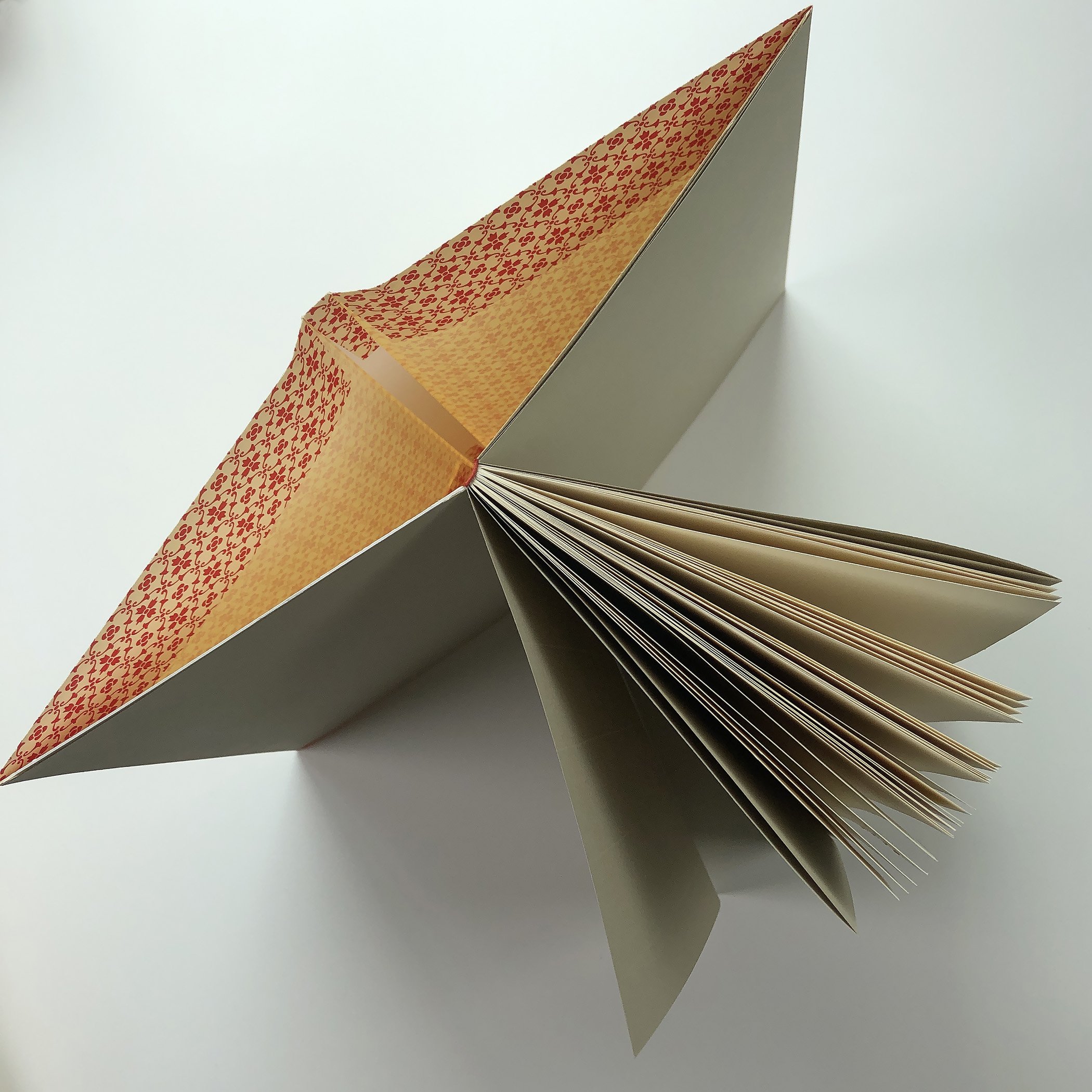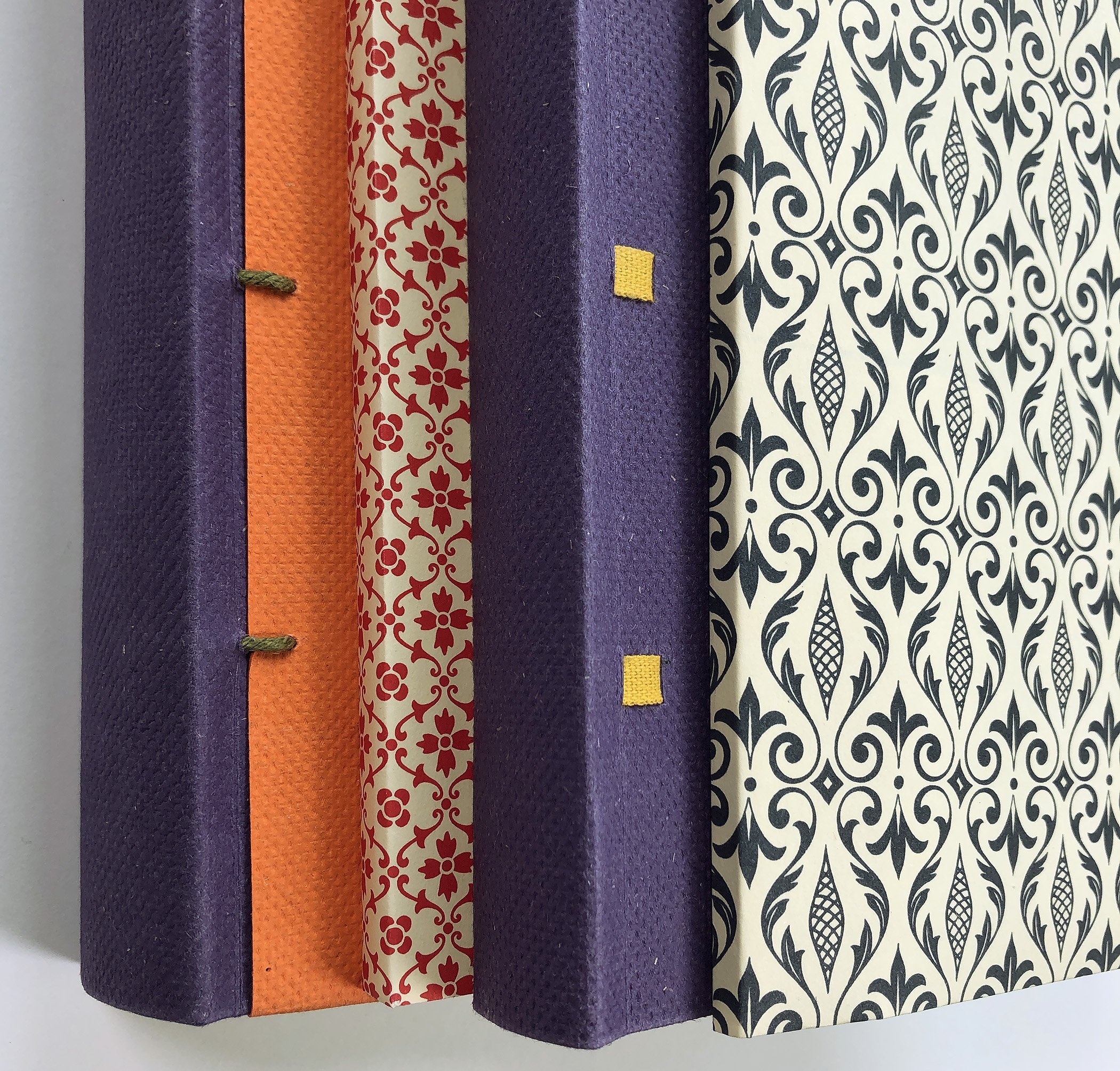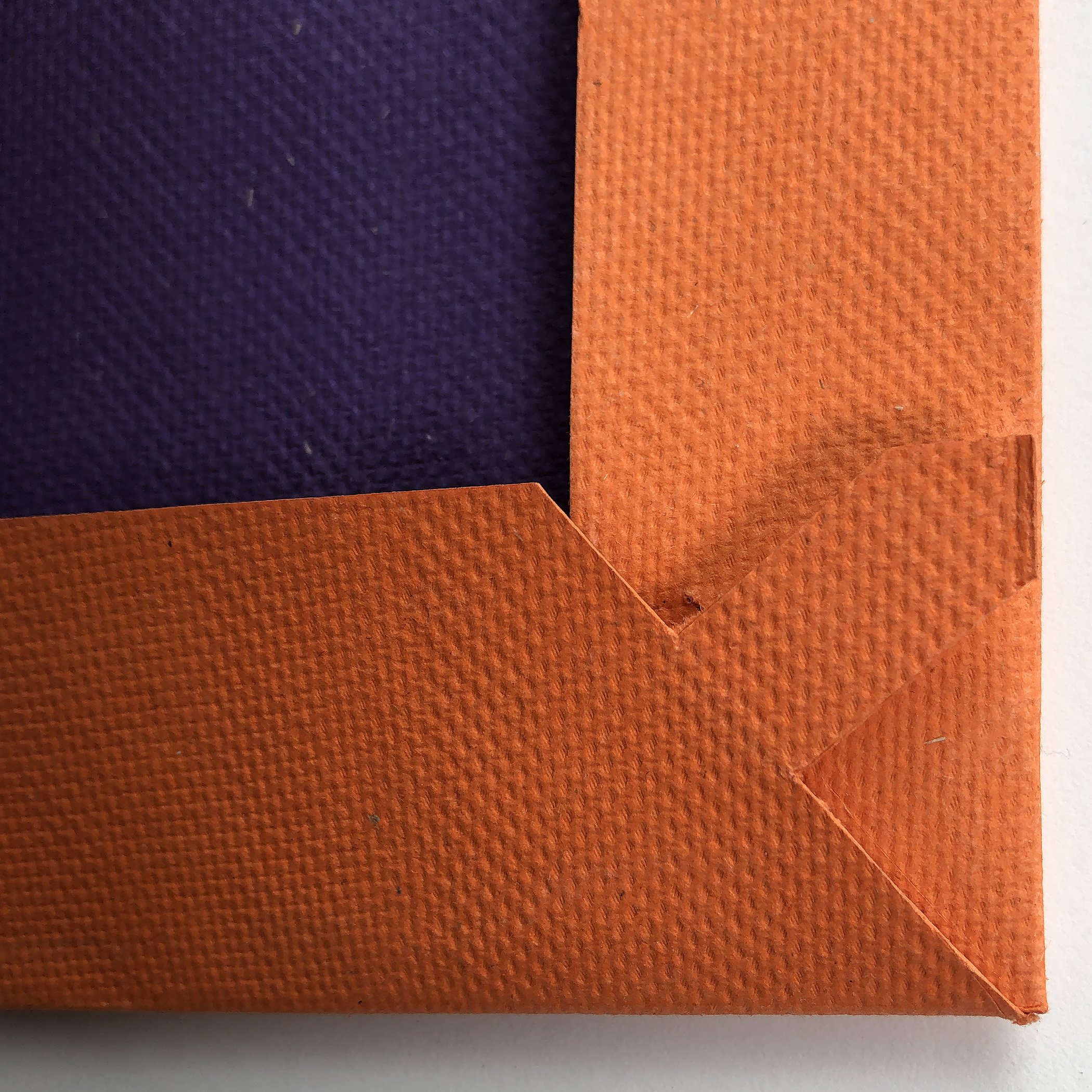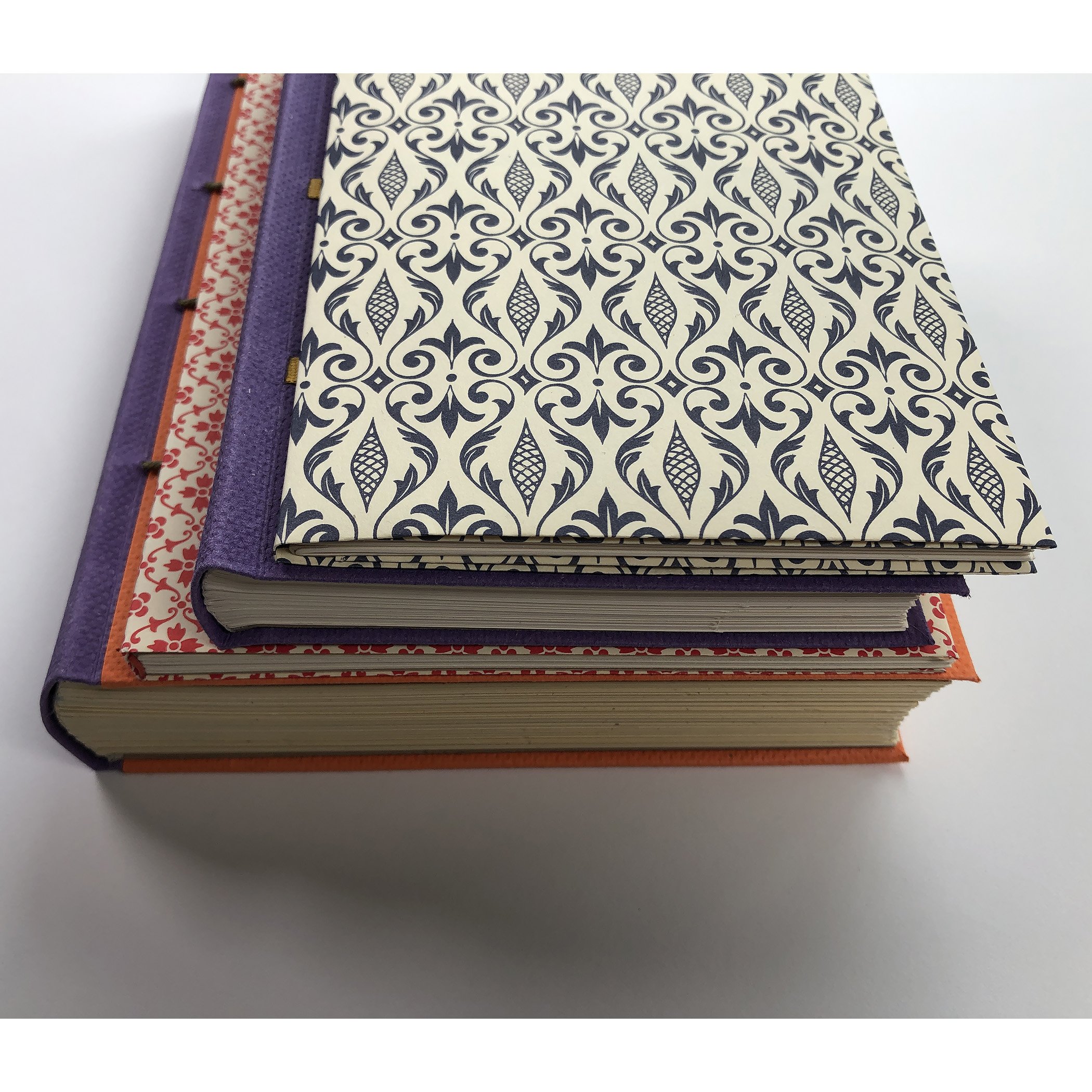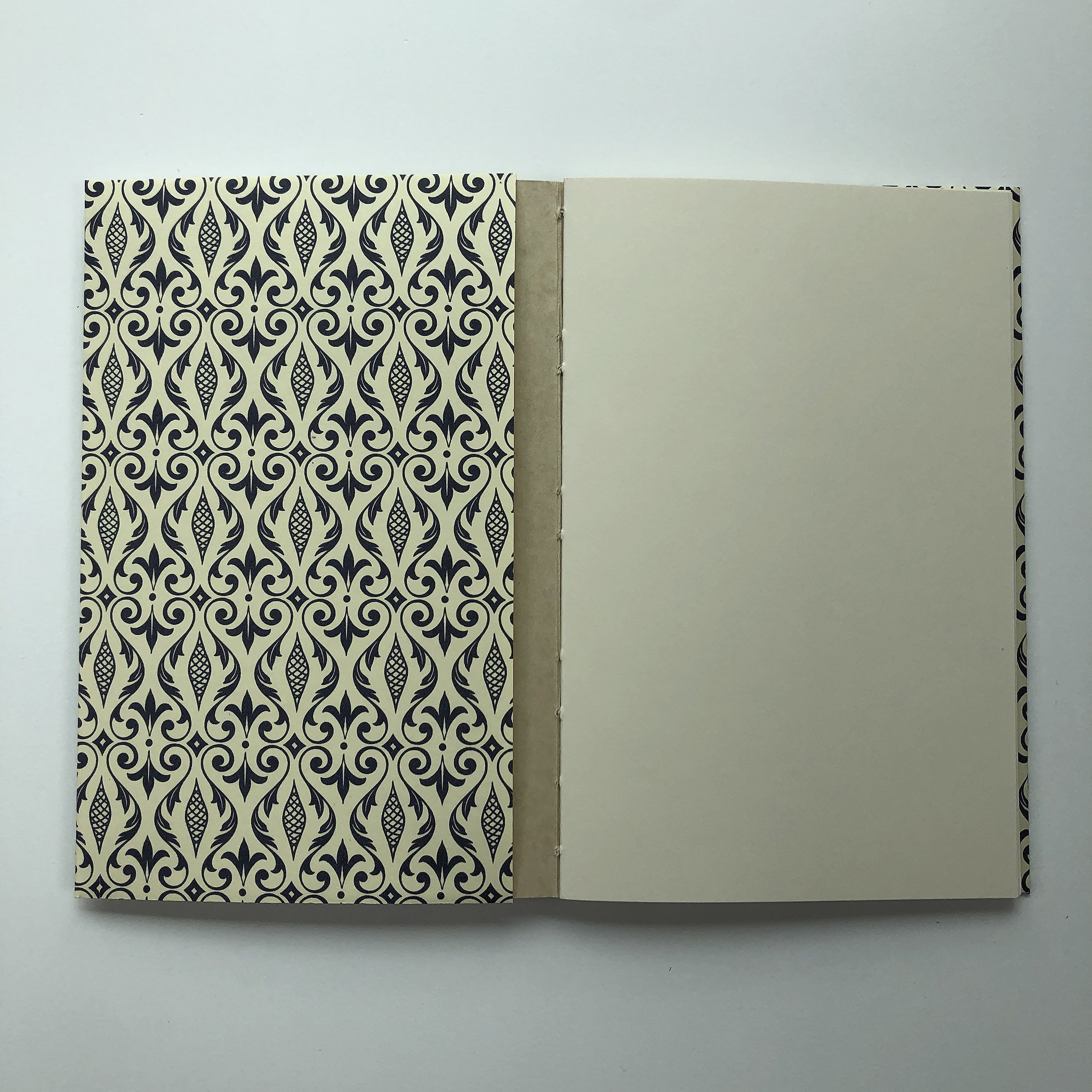Paper Bindings: Small, Medium, Large: handout, models
For centuries paper has served as a quick, elegant, and economical covering material for books. This versatile material can create structures ranging from pocket notebooks to conservation friendly bindings to cases durable enough for a heavily-used manual.
Students will make four binding models. Together these structures provide a set of options that can accommodate any text block from a few poems to a large reference work. All open enthusiastically and can be constructed in a modestly-equipped home studio.
Warmup: Paper Case with Tuck-In Endsheets. This case is based on Rules for Bookbinders, Boss Dog Press, 2003. Bound by Don Rash. The bookblock is attached to the case by inserting one or more of the first and last leaves into deep pockets at the case’s fore edges. The only cutouts in the folded case are to remove bulk from the fore edge folds.
Small: Breakaway Case with Tipped Stiffeners. This binding is based on Portraits of Katherine, Kat Ran Press, 2003. Binding by Claudia Cohen. This elegant case is a lightweight yet protective cover for a thin book. Card stiffeners are tipped between the fore edge turn-ins of the simple folded paper case. When the book is opened, the case breaks away from the spine.
Medium: Laced Compound Folded Cover. This binding is based on an illustration by Gary Frost. This case solves two problems in particular: it can be assembled quickly, and the multiple layers of the case provide strength without weight or bulk. The lacing at the base of the shoulder (not at the spine) encourages full opening.
Large: “Flexible Friends” Three-Piece Laced Case. This binding was introduced by Dutch binder Katinka Keus in her 2010 article in The New Bookbinder article titled “Flexible Friends.” The structure is based on early 18th-century Venetian bindings In this structure the bookblock is laced into the case not at the spine creases but instead at the joint creases to provide full and enthusiastic opening without damage to the case.
A sewing frame, finishing press, and nipping press are not essential but will ease the process.
These models were made as as research to prepare for, or as demos while teaching a bookbinding workshop. They may include notations on what did or did not work, or markings made to aid students over Zoom. Colors and patterns will vary. Cutaway bindings revealing structural features are sometimes available.
Workshop handout not included with model but available separately: Illustrated forty-seven page workshop handout with bibliography plus tool and supply list. Please note this handout was written not to replace but to supplement an in-person workshop demo.

